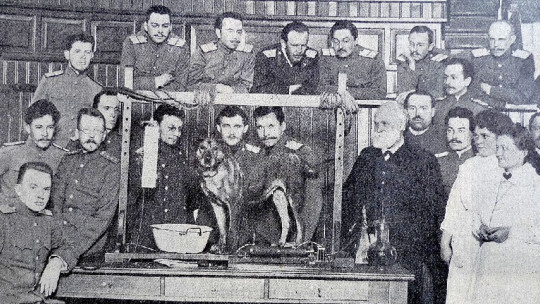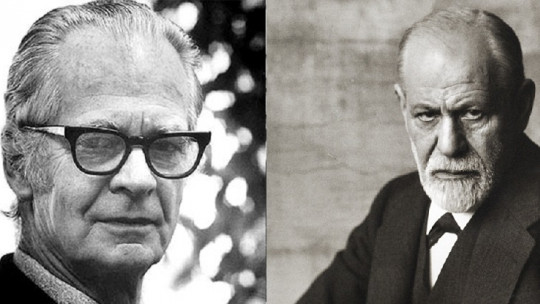
Currently, Psychology includes a wide variety of theoretical orientations. Comparable in some ways to political ideologies or religious beliefs, Psychological paradigms provide behavioral guidelines that induce us to carry out professional practice in different ways.
Behaviorism is one of the most common orientations among psychologists, although today it is more common to be practiced in its cognitive-behavioral aspect. Below we review the history of behaviorism and its main characteristics.
What is behaviorism?
Behaviorism is a current of Psychology that focuses on the study of the common laws that determine human and animal behavior. In its origin, traditional behaviorism leaves aside the intrapsychic to focus on observable behavior That is, it prioritizes the objective over the subjective. This opposes behaviorism to previous approaches such as psychodynamic and phenomenological. In fact, from the behaviorist perspective, what we usually understand as “mind” or “mental life” is just an abstraction of what psychology should really study: the links between stimuli and response in certain contexts.
Behaviorists tend to conceive living beings as “blank slates” whose behavior is determined by reinforcements and punishments that they receive more than due to internal predispositions. Behavior, therefore, does not depend primarily on internal phenomena, such as instincts or thoughts (which are, on the other hand, covert behaviors) but rather on the environment, and we cannot separate either behavior or learning from context in which they take place.
In fact, those processes that occur in the nervous system and that for many other psychologists are the cause of how we act, for behaviorists they are nothing more than other types of reactions generated through our interaction with the environment.
The concept of “mental illness” seen by behaviorists
Behaviorists have often been linked to the world of psychiatry by his use of the experimental method to obtain knowledge, but this association is not accurate, since in many aspects, behaviorists clearly differ from psychiatrists. One of these differences is behaviorism’s opposition to the concept of mental illness.
From this philosophy applied to psychology, pathological behaviors cannot exist, since these are always judged according to their suitability to a context. While diseases must have relatively well-isolated and known biological causes, behaviorists point out that there is not enough evidence in favor of the existence of these biomarkers in the case of mental disorders. Consequently, they oppose the idea that the treatment of problems such as phobias or OCD should focus on psychotropic drugs.
Basic concepts of behaviorism
Below we define the main terms of the behaviorist theory.
1. Stimulus
This term refers to any signal, information or event that produces a reaction (response) of an organism.
2. Answer
Any behavior of an organism that arises as a reaction to a stimulus
3. Conditioning
Conditioning is a type of learning derived from the association between stimuli and responses.
4. Reinforcement
A reinforcement is any consequence of a behavior that increases the probability that it will occur again.
5. Punishment
Opposite of reinforcement: consequence of a behavior that reduces the probability that it will occur again.
Wundt: the birth of Experimental Psychology
Wilhelm Wundt (1832-1920), considered by many “the father of Psychology”, laid the foundations of what would become behaviorism. He created the first scientific psychology laboratory and he systematically used statistics and the experimental method to extract general rules about the functioning of mental processes and the nature of consciousness.
Wundt’s methods relied heavily on introspection or self-observation, a technique in which experimental subjects provide data about their own experience.
Watson: Psychology seen from behaviorism
John Broadus Watson (1878-1958) criticized the use of introspective methodology by Wundt and his followers. In a lecture in 1913 that is considered the birth of behaviorism, Watson stated that to be truly scientific Psychology should focus on overt behavior rather than in mental states and concepts such as “consciousness” or “mind”, which could not be analyzed objectively.
Watson also rejected the dualistic conception that separated the body and the mind (or the soul) and proposed that the behavior of people and animals should be studied in the same way since, if the introspective method was left aside, it would not be possible. There was a real difference between the two.
In a well-known and controversial experiment, Watson and his assistant Rosalie Rayner They managed to give a baby a phobia of rats nine months old (“little Albert”). To do this, they paired the presence of the rat with loud sounds. The case of little Albert demonstrated that human behavior is not only predictable but also modifiable.
The black box
For Watson, living beings are “black boxes” whose interior is not observable. When external stimuli reach us we respond accordingly. From the point of view of the first behaviorists, although intermediate processes occur within the organism, since they are unobservable, they should be ignored when analyzing behavior.
However, in the middle of the 20th century, behaviorists qualified this and, without disregarding the importance of the non-directly observable processes that occur inside the body, they pointed out that psychology does not need to account for them to provide explanations about the logic that governs them. The conduct. BF Skinner, for example, was characterized by giving mental processes exactly the same status as observable behavior, and by conceive thought as verbal behavior We will talk about this author later.
Some neobehaviorists such as Clark Hull and Edward Tolman They did include intermediate processes (or intervening variables) in their models. Hull included internal drive or motivation and habit, while Tolman stated that we construct mental representations of space (cognitive maps).
Watson and behaviorism in general were key influenced by two authors: Ivan Pavlov and Edward Thorndike.
Classical Conditioning: Pavlov’s Dogs
Ivan Petrovich Pavlov (1849-1936) was a Russian physiologist who realized, while conducting experiments on saliva secretion in dogs, that animals they salivated in anticipation when they saw or smelled the food, and even simply when those in charge of feeding them approached. Later he got them to salivate when they heard the sound of a metronome, a bell, a bell or a light by associating these stimuli with the presence of food.
From these studies, Pavlov described classical conditioning, a fundamental concept in behaviorism, thanks to which the first interventions based on behavior modification techniques in human beings were developed. Now, to understand how classical conditioning works, you first have to know what stimuli it works with.
An unconditioned stimulus (i.e., one that does not require learning to elicit a response) elicits an unconditioned response; In the case of dogs, food causes spontaneous salivation. If the unconditioned stimulus (food) is repeatedly paired with a neutral stimulus (for example, the bell), the neutral stimulus will end up producing the unconditioned response (salivate) without the need for the unconditioned stimulus to also be present.
For Pavlov, the concept of mind is not necessary since conceptualizes responses as reflections that occur after the appearance of external stimuli.
Watson and Rayner’s Little Albert experiment is another example of classical conditioning. In this case, the rat is a neutral stimulus that becomes a conditioned stimulus that provokes the fear response by association with the loud noise (unconditioned stimulus).
Animals in behaviorism
Classical behaviorists frequently used animals in their studies. The animals are considered equivalent to people in terms of their behavior and the learning principles extracted from these studies are in many cases extrapolated to human beings; Yes, always trying to respect a series of epistemological presuppositions that justify this extrapolation. We must not forget that among species there are many aspects of behavior that vary.
The systematic observation of animal behavior would give way to Ethology and Comparative Psychology. Konrad Lorenz and Niko Tinbergen are two of the most important representatives of these currents.
Instrumental Conditioning: Thorndike’s Cats
Edward Lee Thorndike (1874-1949), a contemporary of Pavlov, conducted various experiments with animals to study learning. He put cats in “problem boxes” to observe if they managed to escape from them and how.
In the boxes there were several elements that the cats could interact with, such as a button or a ring, and only contact with one of these objects could cause the box door to open. At first the cats managed to get out of the box by trial and error, but as the attempts were repeated they escaped more and more easily.
From these results Thorndike formulated the law of effect, which states that If a behavior has a satisfactory result, it is more likely to be repeated, and that if the result is unsatisfactory this probability decreases. Later he would formulate the law of exercise, according to which learning and habits that are repeated are reinforced and those that are not repeated are weakened.
Thorndike’s studies and works introduced instrumental conditioning According to this model, learning is a consequence of the reinforcement or weakening of the association between a behavior and its consequences. This served as the basis for formulating proposals later, in the emergence of true behaviorism, as we will see.
Skinner’s radical behaviorism
Thorndike’s proposals were the antecedent of what we know as operant conditioning, but this paradigm was not fully developed until the appearance of the works of Burrhus Frederic Skinner (1904-1990).
skinner introduced the concepts of positive and negative reinforcement Positive reinforcement is called rewarding a behavior by giving something, while negative reinforcement consists of withdrawing or avoiding an unpleasant event. In both cases, the intention is to increase the frequency and intensity of the appearance of a certain behavior.
Skinner defended radical behaviorism, which maintains that all behavior is the result of learned associations between stimuli and responses. The theoretical and methodological approach developed by Skinner is known as experimental behavior analysis and has been especially effective in the education of children with intellectual and developmental disabilities.
Development of behaviorism: the cognitive revolution
Behaviorism began to decline in the 1950s, coinciding with the rise of cognitive psychology. Cognitivism is a theoretical model that emerged as a reaction to behaviorism’s radical emphasis on overt behavior, leaving cognition aside. The progressive inclusion of intervening variables in behavioral models greatly favored this paradigm shift, known as the “cognitive revolution.”
In psychosocial practice, the contributions and principles of behaviorism and cognitivism would end up coming together in what we know as cognitive-behavioral therapy, which focuses on finding the treatment programs most supported by scientific evidence.
The third generation therapies developed in recent years They recover part of the principles of radical behaviorism, reducing the influence of cognitivism. Some examples are Acceptance and Commitment Therapy, Behavioral Activation Therapy for depression, or Dialectical Behavior Therapy for borderline personality disorder.








